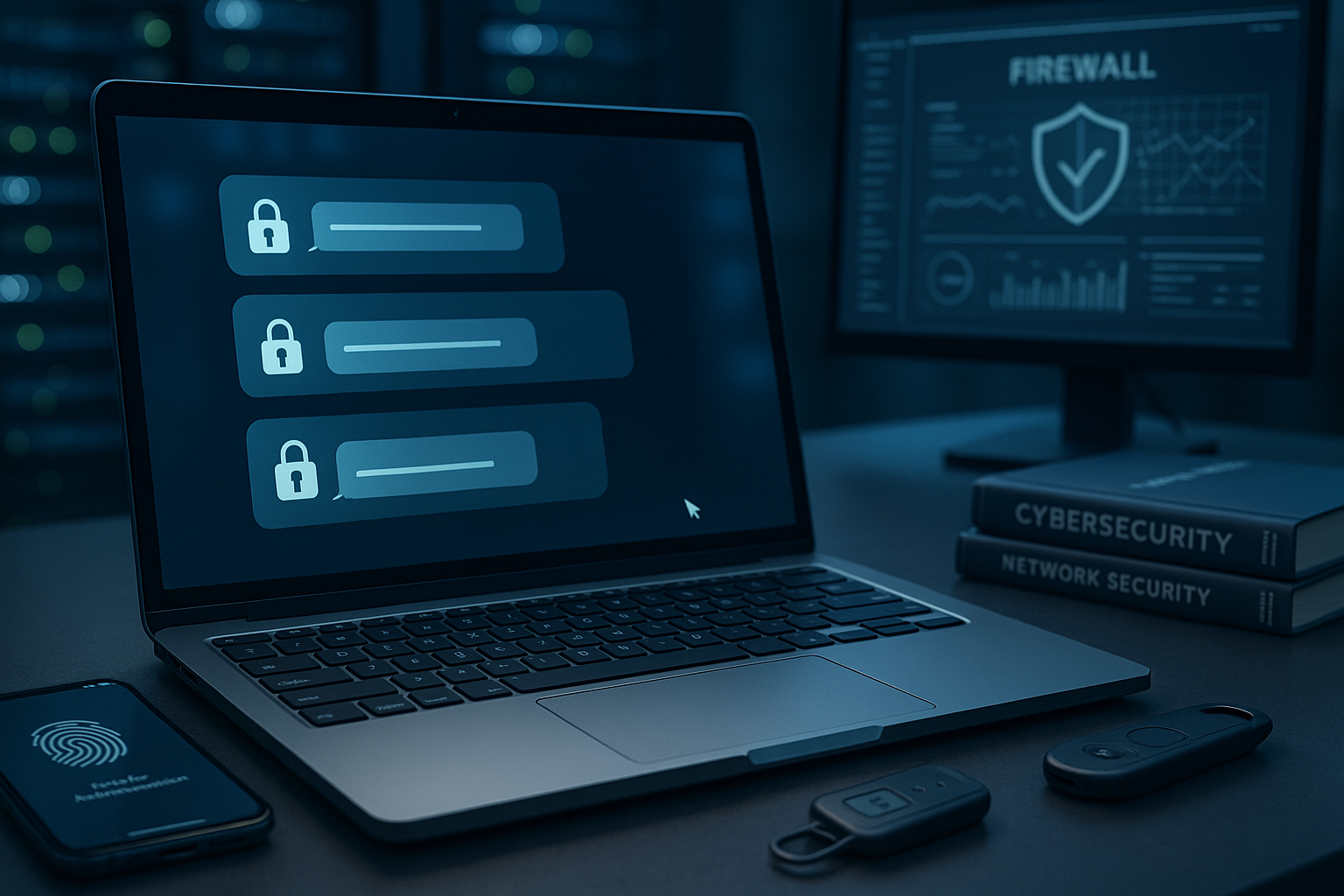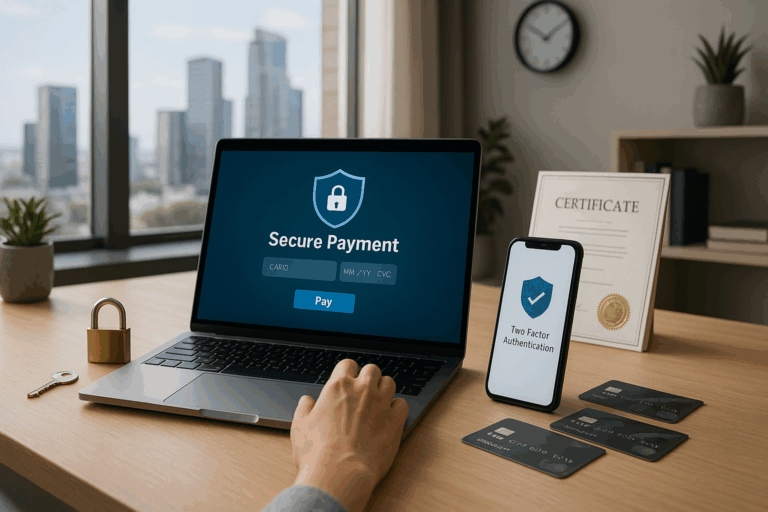🏰💻 Now, stop imagining because this is not a scene from a futuristic movie, but a very tangible reality in the realm of encrypted technology. Welcome to the intriguing world of secure communication.
As we navigate through the vast digital landscape today, the need for robust security measures to protect our personal and professional exchanges has never been more crucial. The idea behind this article is to enlighten you about the power of encrypted technology and its role in safeguarding your messages, the ones you thought were private. 🕵️♂️💼
With this piece, we aim to unlock the secrets of secure communication, delving into the world of encrypted technology. The purpose is not just to provide you with a thorough understanding of the concept, but also to equip you with the tools and knowledge to protect your digital conversations effectively. 🔐
Before we deep dive, let’s bring everyone up to speed. So what exactly is encrypted technology? In the simplest terms, it’s a method of converting your data into a coded language, making it impossible for unauthorized individuals to understand your messages. Think of it as a protective cloak for your digital exchanges, keeping them safe from unwanted intruders. 🔒📲
Today’s digital world teems with numerous encrypted messaging applications, each claiming to offer the best security features. However, the question we need to ask is, “Are they really as secure as they claim to be?” This article will address this question, dissecting the anatomy of secure communication and the role of encrypted technology in ensuring the same.
We will begin by exploring the historical evolution of encrypted technology, taking you through its journey from the times of simple cipher systems to the complex algorithms used today. The next stop will be the working principles behind encryption, elucidating the mechanisms that make it a formidable security tool. 🧬💡
After establishing a firm grasp on the fundamentals, we will progress to the next section, where we will analyze various types of encrypted technology. We’ll break down their features, strengths, and limitations, helping you make an informed decision when choosing a platform for secure communication.
But what’s the point of knowing all this if you don’t know how to use it, right? So, buckle up because the subsequent sections will take you through a step-by-step guide on how to use encrypted technology for safeguarding your messages, both on personal and professional fronts. 🛡️🚀
Finally, we will wrap up our voyage with a glimpse into the future of encrypted technology, discussing emerging trends and how they promise to reshape the landscape of secure communication. The idea is to prepare you for the evolving digital world, arming you with knowledge and insight to stay ahead of the curve. 🌐🔭
Ready to delve into the fascinating world of encrypted technology? Let’s embark on this enlightening journey together, unlocking the power of secure communication one step at a time! 💪🔓
Demystifying Encrypted Technology: Key to Secure Communication
As technology permeates every aspect of our lives, the importance of secure communication cannot be overstated. Whether you are sharing sensitive business data or personal conversations, encrypted technology ensures that your messages remain confidential and secure from prying eyes. However, understanding how this technology works and how to leverage it can be a complex task. In this article, we will unlock the secrets of secure communication and provide an in-depth understanding of encrypted technology.
In an era where information is power, data breaches and cyberattacks are becoming increasingly common. The advent of encrypted technology is a game-changer, acting as a shield for your messages. Encrypted technology scrambles your message into an unreadable format, which can only be deciphered by the recipient with the correct decryption key.
This process is not as complicated as it may sound. In fact, if you are using messaging apps like WhatsApp or Signal, you are already using encrypted technology! These applications use what is known as ‘end-to-end encryption’, which ensures that only the sender and the recipient can read the message. Even the service provider cannot decipher these messages.
Exploring the Underlying Mechanism of Encrypted Technology
Encrypted technology uses mathematical algorithms and cryptographic keys to convert plain text messages into ciphertext. This encrypted message can only be decoded by a user with the appropriate key. This process is fundamentally based on two types of encryption methods – symmetric and asymmetric encryption.
Symmetric encryption, also known as private-key encryption, involves the use of the same key for both encryption and decryption. This method is fast and efficient, making it ideal for encrypting large amounts of data. However, the key’s distribution can be a security concern, as it needs to be shared with the recipient without interception.
On the other hand, asymmetric encryption, or public-key encryption, uses two keys – a public key for encryption and a private key for decryption. The public key is available to everyone, while the private key remains confidential. This method is more secure than symmetric encryption, but it is also slower and requires more computational resources.
Comparison of Symmetric and Asymmetric Encryption
Here is a comparative table highlighting the differences between symmetric and asymmetric encryption:
| Aspect | Symmetric Encryption | Asymmetric Encryption |
|---|---|---|
| Speed | Fast | Slow |
| Resource Requirement | Low | High |
| Key Distribution | Risky | Secure |
Choosing the Right Encrypted Technology
Different needs require different encryption solutions. For instance, if you are an individual seeking to secure your personal messages, applications with end-to-end encryption like WhatsApp or Signal are excellent choices. However, if you are a business dealing with large amounts of sensitive data, you might need more robust solutions like Virtual Private Networks (VPNs) or Secure Sockets Layer (SSL) encryption.
As we dive deeper into the world of encrypted technology, it is essential to be aware of the potential pitfalls. While encryption provides a secure environment for communication, it is not immune to cyber threats. Therefore, it is crucial to keep your encryption software updated and choose reliable and reputable encryption solutions.
Encrypted technology can seem daunting, but with a little understanding and the right tools, you can safeguard your communications effectively. The key is to assess your needs and choose the encryption method that suits your requirements best.
Video Tutorial: ‘How Does Encryption Work?’ by Techquickie
For a more visual explanation of encrypted technology, the video titled ‘How Does Encryption Work?’ by Techquickie offers an excellent and understandable explanation. Check it out to gain a deeper understanding of the topic.
Remember, secure communication is no longer a luxury, but a necessity in our digitally interconnected world. Embrace encrypted technology and take a step towards secure and confidential communication.

Conclusion
In conclusion, the journey we have embarked on, navigating through the intricacies of software engineering and technical writing, has been enlightening. We’ve explored the depths of these fields, unraveling their complexities and understanding their nuances.
Let’s briefly revisit the key points discussed. We started off by establishing the importance of software engineering, a discipline that powers our digital world. From the software running our laptops, smartphones, and smart devices to those controlling the operations of large corporations, the role of software engineering is undeniable 🌐.
We touched on concepts such as software design, coding, testing, and maintenance, explaining how they form the backbone of any software product. The emphasis on the software development life cycle (SDLC) was significant, as it represents the iterative process of developing software that meets user requirements.
Turning our attention to technical writing, we delved into the art of simplifying complex information. A crucial skill in a world overrun by jargon and technical terminology. We highlighted its necessity in IT and engineering spaces, emphasizing how it facilitates effective communication between technical and non-technical individuals 📝.
The interplay between software engineering and technical writing was also discussed. We demonstrated how these fields complement each other, with technical writing playing an instrumental role in documenting software processes, guiding users, and aiding software maintenance.
Reflecting on this exploration, it’s clear that the intersection of software engineering and technical writing is significant. It’s a nexus that bridges the gap between technical sophistication and simplicity, fostering a space where complex ideas can be communicated effectively and universally understood. It is the cornerstone of a digitally literate society 🌉.
I hope this article has been insightful and that it has ignited a spark of curiosity in you to delve deeper into these subjects. By sharing this knowledge, we can collectively build a more digitally literate society, where technology serves us better, and its comprehension isn’t limited to a select few.
If you found this article helpful, feel free to share it among your networks. Let’s spread the knowledge and inspire more individuals to understand and appreciate the world of software engineering and technical writing. If you have any thoughts or experiences related to these topics, please comment below. I look forward to engaging in enlightening discussions with you all 💡.
Remember, “Knowledge shared is knowledge multiplied”. Here are a few links for further exploration:
Indeed: What is Software Engineering
ScienceDirect: Role of Technical Writing in IT
Keep learning, keep growing, and stay curious!
Rodrigo Almeida, signing off.



